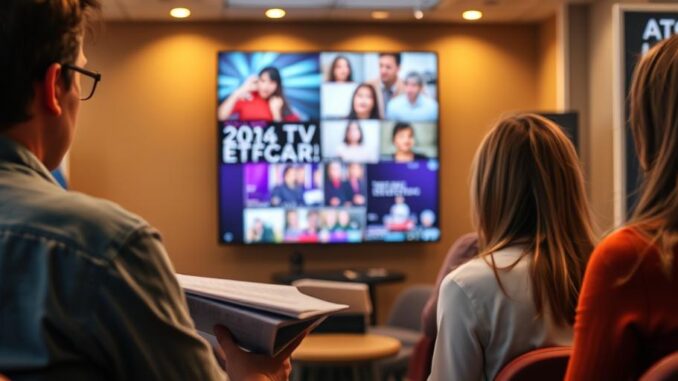
Summary
This article explores how telehealth is transforming healthcare access for underserved communities. We delve into the benefits, address existing challenges, and look towards the future of telehealth in bridging the healthcare gap. Ultimately, telehealth offers a powerful tool for improving health equity and ensuring everyone has access to the care they need.
** Main Story**
Bridging the Healthcare Gap: How Telehealth is Making a Real Difference
Telehealth is changing the game when it comes to healthcare, especially for underserved communities. These communities often face a tough set of circumstances. Think about it: geographical isolation, socioeconomic challenges, and limited transportation all create significant hurdles to getting the healthcare they need. Telehealth? Well, it jumps over those hurdles, providing a virtual bridge to essential medical services. By using technology, telehealth is empowering people in remote areas to connect with specialists, manage ongoing health issues, and receive preventative care, and the best part? They can do it all from their own homes. I remember reading about a woman in rural Montana who was able to manage her diabetes through remote monitoring, something that would’ve been nearly impossible without telehealth.
Breaking Down Barriers: Access, Affordability, and Convenience
-
Improved Access: One of the biggest wins with telehealth is how it connects patients in underserved areas with specialists they might never otherwise see. This is so important, especially for people in rural areas, or those who just can’t easily get around. No more super long, expensive trips to city medical centers!
-
Enhanced Affordability: Let’s be honest, healthcare can be expensive. Telehealth visits are often more budget-friendly than traditional in-person appointments. When you take away travel costs, time off work, and childcare expenses, healthcare becomes much more accessible for those who need it most. It’s about making healthcare a possibility, not a luxury.
-
Increased Convenience: Life’s busy, right? Telehealth gets that. It gives patients the flexibility to book appointments when it works for them, and that’s really important. This makes it easier for people to stick to their treatment plans and improve their overall health. Whether it’s a quick virtual check-up during lunch or a remote monitoring update before bed, telehealth can adapt. I know I would find that useful.
That said, it’s not all sunshine and roses. There are still some real challenges to tackle, but the progress we’re making is undeniable.
Addressing the Challenges: Connectivity, Digital Literacy, and Equity
-
Bridging the Digital Divide: Okay, so telehealth relies on reliable internet access, and that can be a problem. Many underserved communities, particularly in rural areas, simply don’t have good broadband infrastructure. Expanding access is essential to making telehealth work for everyone. It’s a foundational piece of the puzzle. The lack of technology makes it impossible for patients to get access to healthcare when they need it most.
-
Promoting Digital Literacy: Not everyone’s a tech whiz, and that’s okay. Navigating technology can be tricky for some people, so providing training and support for both patients and healthcare providers is key. We have to ensure equitable access to telehealth services. It’s about empowering people with the skills they need to take control of their health.
-
Ensuring Cultural Competency: Telehealth interactions aren’t just about the technology; they’re about people. They need to be culturally sensitive and consider the specific needs of different communities. We need to address language barriers, health literacy levels, and cultural preferences to deliver care that’s both effective and respectful.
The Future of Telehealth: Innovation and Expansion
-
Integration of AI and Machine Learning: Imagine AI-powered tools that can enhance diagnostic accuracy, personalize treatment plans, and make telehealth services even more efficient. It’s not science fiction, it’s happening now! It won’t be long until AI can read medical reports and assist health professionals, and maybe even perform minor roles itself. Now that’s the future of medicine.
-
Expansion of Remote Patient Monitoring: Wearable devices and remote monitoring systems are like having a 24/7 health companion. They provide continuous health data, enabling proactive interventions and better management of chronic conditions. This is how we can catch problems early and prevent them from becoming bigger issues. It’s preventative healthcare on steroids.
-
Focus on Preventative Care: Telehealth is about more than just treating illness; it’s about preventing it. By facilitating preventative screenings, health education, and early intervention, we can reduce the burden of chronic diseases in underserved communities. I think that focusing on preventing disease rather than curing it is a much better way to address healthcare.
Telehealth is more than just a trend; it’s a fundamental shift in how we deliver healthcare. It promises a future where access to quality care isn’t dictated by location or circumstance, and that’s something worth striving for. Now, can telehealth solve all our healthcare problems? Probably not. But if we overcome the challenges and keep innovating, it can definitely help level the playing field and ensure health equity for all.


Telehealth bringing healthcare to remote Montana? Love it! But let’s not stop there. Imagine virtual reality therapy for PTSD patients who can’t easily access mental health services. Talk about bringing the mountain to Muhammad, eh?